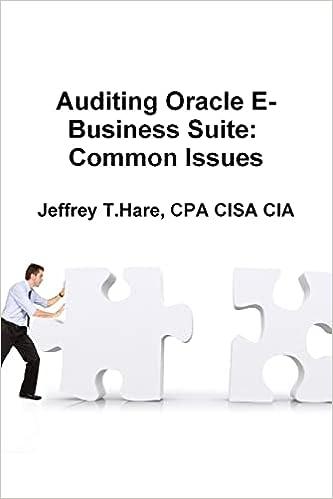Question
The debt-to-total assets ratio is primarily a measure of: profitability solvency earnings per share liquidity 2. Entity X uses the allowance method for estimating bad
- The debt-to-total assets ratio is primarily a measure of:
|
| profitability | |
|
| solvency | |
|
| earnings per share | |
|
| liquidity |
2. Entity X uses the allowance method for estimating bad debt expense and has a normal balance in the Allowance for Doubtful Accounts. When Entity X writes off an account receivable:
|
| the customer's account must be restored and then cash collected. | |
|
| the cash (net) realizable value of the accounts receivable account is unchanged. | |
|
| bad debt expense increases. | |
|
| none of the above. |
3.Depreciation and amortization are:
|
| required even if the market value of the asset may be increasing. | |
|
| implement the expense recognition principle. | |
|
| non-cash expenses. | |
|
| all the choices are correc |
4. Entity A reported the following items on its balance sheet at the end of the current year. All accounts are listed. What is Entity As Retained Earnings balance at the end of the current year? Cash $ 45,000 Property, plant & equipment 200,000 Retained earnings ? Inventory 75,000 Accounts receivable 90,000 Long-term debt 60,000 Accounts payable 80,000 Common stock 150,000
|
| $410,000 | |
|
| $120,000 | |
|
| $140,000 | |
|
| $270,0 |
5. When a business makes payment for equipment that it purchased earlier on credit (hint: think of the journal entry),
|
| assets increase and liabilities increase. | |
|
| assets increase and owners' equity increases. | |
|
| liabilities increase and owners' equity decreases. | |
|
| assets decrease and liabilities decrease. |
Step by Step Solution
There are 3 Steps involved in it
Step: 1

Get Instant Access to Expert-Tailored Solutions
See step-by-step solutions with expert insights and AI powered tools for academic success
Step: 2

Step: 3

Ace Your Homework with AI
Get the answers you need in no time with our AI-driven, step-by-step assistance
Get Started


